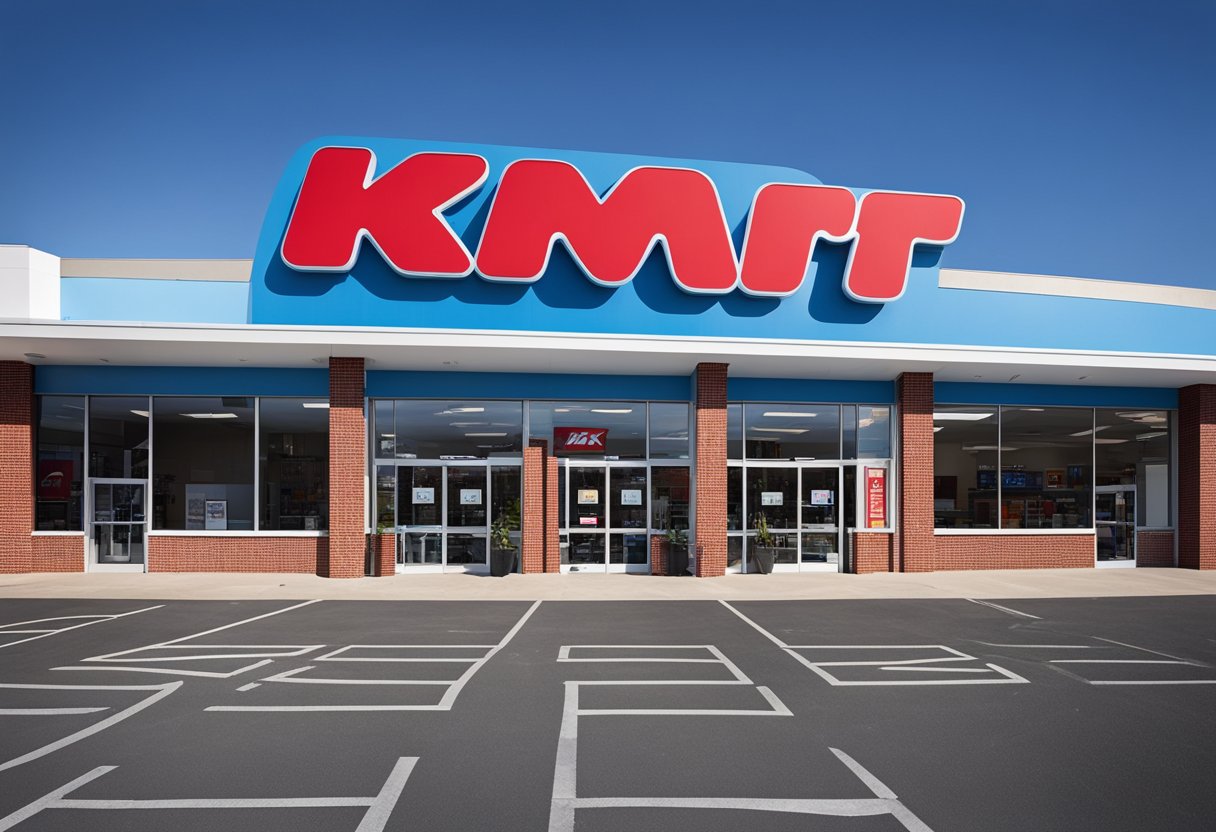Kmart, once a giant in the discount retail world, has a complex ownership story that has evolved over decades. The company that began as S.S. Kresge Company officially changed its name to Kmart Corporation in 1977. Today, Kmart in the United States is owned by Transformco, a subsidiary of Sears Holdings Corporation, while Kmart Australia operates as part of the Kmart Group division of Wesfarmers.

The ownership journey for Kmart has included significant changes, especially in recent years. The American and Australian Kmart chains now have completely separate ownership structures despite sharing the same brand name.
In Australia, Kmart has been thriving under Wesfarmers’ ownership, delivering strong profits after a successful transformation of its business model. Meanwhile, the US operations have faced challenges under Transformco’s management, with significantly reduced store numbers compared to Kmart’s heyday.
Key Takeaways
- Kmart US is owned by Transformco (Sears Holdings Corporation), while Kmart Australia is owned by Wesfarmers.
- The discount retailer’s ownership changed dramatically when S.S. Kresge Company officially renamed itself to Kmart Corporation in 1977.
- Australian Kmart stores operate under a completely different business structure and have experienced greater retail success than their American counterparts.
Historical Overview of Kmart
Kmart’s journey from a small five-and-dime store to a retail giant and its subsequent financial struggles reflects the changing landscape of American retail. The company’s history spans over a century, marked by innovation, expansion, and later, significant challenges.
The Origins of Kmart
Kmart’s story begins with Sebastian S. Kresge, who opened his first store in 1899 in Detroit, Michigan. This humble beginning featured merchandise priced at just 5 and 10 cents, establishing the business as a “five-and-dime” store. The low prices proved popular with shoppers.
Kresge’s business acumen allowed him to expand rapidly. By the time the S.S. Kresge Company was well-established, it had grown to 85 stores. This laid the foundation for what would later become the Kmart empire.
The Kresge stores operated for decades before the company decided to rebrand and expand its concept. This strategic shift would eventually transform the modest five-and-dime business into one of America’s most recognized discount retail chains.
Expansion and Growth
The first official Kmart store opened in 1962, marking a significant shift in the company’s business model. This new discount department store format was a departure from the original Kresge five-and-dime concept.
Kmart experienced explosive growth in the 1960s and 1970s. The company expanded internationally in 1968 when it formed Kmart Australia Limited with G.J. Coles & Coy Limited. Kresge owned 51% of this venture, marking the beginning of Kmart’s global presence.
At its peak, Kmart boasted a massive empire of approximately 2,500 stores across the United States. The iconic blue light special – flash sales announced by a flashing blue light and store announcement – became a cultural phenomenon that helped drive customer traffic and boost sales.
Financial Challenges and Bankruptcy
Despite its early success, Kmart began facing serious challenges in the 1980s and 1990s. The company struggled to compete with emerging retail giants like Walmart and Target, which had more efficient supply chains and operations.
By the early 2000s, Kmart’s financial problems had reached a critical point. In January 2002, the company filed for Chapter 11 bankruptcy protection, marking one of the largest retail bankruptcies in U.S. history at that time.
After emerging from bankruptcy, Kmart made a bold move in 2005 by merging with Sears, forming Sears Holdings Corporation. This merger, orchestrated by chairman Eddie Lampert, was intended to revitalize both struggling retailers.
Unfortunately, the merger didn’t solve Kmart’s fundamental problems. Store numbers continued to decline as the company closed underperforming locations. Today, only a handful of Kmart stores remain operational in the United States, a stark contrast to its former retail dominance.
Kmart’s Ownership Timeline

Kmart has changed hands several times throughout its history. The retail chain began as part of the S.S. Kresge Company before evolving through several corporate transformations and ownership changes.
Early Ownership by S.S. Kresge Company
Kmart’s story begins with Sebastian Spering Kresge, who formed a partnership with John McCrory in 1897 to open five-and-dime stores in Detroit and Memphis. This venture would eventually grow into the S.S. Kresge Company, Kmart’s original parent company.
The first actual Kmart discount store opened in 1962 in Garden City, Michigan. This marked the beginning of a new retail concept that would quickly grow in popularity across America.
By 1977, Kmart stores were generating nearly 95% of the S.S. Kresge Company’s sales. This dramatic impact led the company to officially change its name to Kmart Corporation, reflecting the brand’s dominance in the company’s business portfolio.
Merger and Emergence of Sears Holdings
After facing financial difficulties, Kmart filed for bankruptcy in the early 2000s. The company needed a new direction to survive in the competitive retail landscape.
In 2005, Kmart merged with Sears, creating Sears Holdings Corporation. This merger brought together two iconic American retail brands under one corporate umbrella.
Under Sears Holdings, Kmart continued to operate as a separate retail brand, though the company struggled to compete with retail giants like Walmart and Target. The combined company faced ongoing challenges in adapting to changing consumer preferences and the rise of online shopping.
Acquisition by Transformco
In 2019, Sears Holdings filed for bankruptcy, leading to another ownership change for Kmart. Both Kmart and Sears were acquired by Transformco, a company formed by Eddie Lampert, the former chairman of Sears Holdings.
Transformco continues to operate the remaining Kmart stores, though their numbers have dwindled significantly from the chain’s heyday. The company has closed many locations as part of restructuring efforts.
Today, only a handful of Kmart stores remain open in the United States, a sharp decline from the thousands that once dotted the American landscape. Transformco maintains ownership of the brand, though its future remains uncertain in today’s challenging retail environment.
Store Locations and Geographic Reach

Kmart’s retail footprint has dramatically shrunk from its peak of over 2,000 stores nationwide to just a handful of locations today. The once-mighty retailer’s presence continues to dwindle as parent company Transformco manages the remaining stores.
Presence on U.S. Mainland
Kmart’s presence on the U.S. mainland has drastically decreased in recent years. As of 2025, only a few stores remain operational across the country.
The Miami location continues to serve customers in Florida, providing household essentials and clothing to loyal shoppers. This store represents one of the last bastions of the Kmart brand in a major metropolitan area.
In New York, the Bridgehampton Kmart remains a notable location, serving both year-round residents and summer visitors. This Hamptons store has survived multiple rounds of closures, adapting to the seasonal nature of its customer base.
Some mainland stores have found success by serving communities with limited retail options. These locations often stock region-specific merchandise that meets the unique needs of their customers.
International and Special Locations
Kmart’s international presence now operates under different ownership in some regions. In Australia and New Zealand, Kmart stores are thriving but have no corporate relationship with the U.S. version.
The Wesfarmers company has fully owned the Australian and New Zealand Kmart operations since 1994. These stores differ significantly from their American counterparts in merchandise and store layout.
Guam hosts a particularly successful Kmart location. This store serves as a major shopping destination for residents and tourists alike, offering products specifically suited to island life.
Special locations like Guam have remained profitable by adapting to local needs. They stock items that may be difficult to find elsewhere on the island, making them valuable to the community.
The Last Kmart Stores
As of 2025, fewer than a dozen Kmart stores remain in operation across the United States. These final stores represent the last vestiges of what was once a retail giant.
The last Kmart stores often share common characteristics:
- Located in areas with limited retail competition
- Loyal customer bases that have shopped there for decades
- Merchandise tailored to specific community needs
- Smaller footprints than their former big-box layouts
These remaining stores continue to operate under Transformco, the company formed after Sears Holdings Corporation filed for Chapter 11 bankruptcy in 2018.
Each closing brings nostalgic reactions from customers who remember Kmart’s Blue Light Specials and family shopping trips. The final stores serve as both retail outlets and living museums of American shopping history.
The Retail Landscape and Kmart

Kmart’s position in retail has evolved dramatically through decades of competition and market shifts. Once a major player, the company now faces significant challenges in a landscape dominated by newer competitors and changing consumer habits.
Competition with Walmart and Target
Kmart struggled to maintain its market position when faced with aggressive competition from Walmart and Target. In the 1990s and early 2000s, both competitors invested heavily in store modernization and supply chain improvements while Kmart fell behind.
Walmart’s “everyday low prices” strategy and Target’s “cheap chic” approach captured different segments of Kmart’s customer base. While Kmart pioneered the Blue Light Special and had strong brand recognition, it couldn’t match Walmart’s pricing power or Target’s trendy merchandise.
The competition severely impacted Kmart’s financial health. By the early 2000s, Kmart was losing ground fast, with customers favoring the cleaner stores and better merchandise selection of its rivals. This competitive disadvantage was a major factor in Kmart’s eventual bankruptcy filing.
Impact of E-Commerce on Physical Stores
The rise of e-commerce created another significant challenge for Kmart. Unlike competitors who embraced online shopping early, Kmart was slow to develop a strong digital presence.
Amazon and other online retailers changed consumer expectations about convenience and selection. Kmart’s website lagged behind competitors in user experience and product availability, further eroding its customer base.
Physical stores became more expensive to maintain as foot traffic declined. Kmart found itself with large, aging stores that required significant investment to modernize at a time when shoppers were increasingly comfortable making purchases online.
The company never successfully integrated its physical and digital shopping experiences, a strategy that more successful retailers embraced as “omnichannel” became the industry standard.
Kmart in the Shopping Center Environment
Kmart stores were once anchor tenants in shopping centers across America. They drew customers who would also visit nearby smaller stores. Their iconic five-and-dime store roots evolved into large discount department stores that anchored many community shopping centers.
As Kmart’s popularity declined, so did the traffic to these shopping centers. When Kmart locations closed, many shopping centers suffered, creating a ripple effect for smaller retailers in the same complexes.
Many former Kmart locations remained vacant for years, creating “dead zones” in retail environments. Some property owners eventually divided these large spaces into smaller stores or repurposed them for non-retail uses.
The decline of Kmart as a shopping center anchor reflects broader changes in American retail. Large department stores no longer drive customer traffic the way they once did.
Transformation and Future Strategies
Kmart has undergone significant changes as its parent company Transformco works to revitalize the once-dominant discount retailer in a highly competitive market. The brand has shifted strategies several times in recent years to find its place in today’s retail landscape.
Adapting to Market Changes
Kmart’s journey from retail giant to struggling chain has forced the company to rethink its approach. After filing what was once the largest retail bankruptcy in history, the brand has been working to reinvent itself under new ownership.
Today, Kmart operates more as a property management company through Transformco and Seritage Growth Properties. It focuses on real estate assets rather than purely retail operations. This shift represents a dramatic departure from its origins as a discount retailer founded by S.S. Kresge, who originally sold everything for 5 and 10 cents.
The company has closed hundreds of locations across the country, dramatically reducing its retail footprint. This downsizing strategy aims to eliminate underperforming stores while maintaining the brand’s presence in select markets.
Focus on Full-Size and Smaller-Format Stores
Kmart’s remaining store strategy involves a two-pronged approach with both full-size locations and smaller-format stores. The full-size stores continue to offer the traditional Kmart shopping experience with a wide range of merchandise categories.
In contrast, the smaller-format stores provide a more focused selection of products tailored to specific community needs. These compact locations require less overhead and can operate in markets where a full-size Kmart would not be financially viable.
Eddie Lampert, who was appointed Chairman following bankruptcy proceedings, leads Kmart. Under his leadership, Kmart has experimented with various store formats to find what resonates with today’s consumers. The company has also explored shared locations with Sears, another retailer under the Transformco umbrella.
The remaining Kmart stores have updated their merchandise mix to better compete with other discount retailers like Target and Walmart. They focus on categories where they can still attract customers despite having fewer locations overall.




